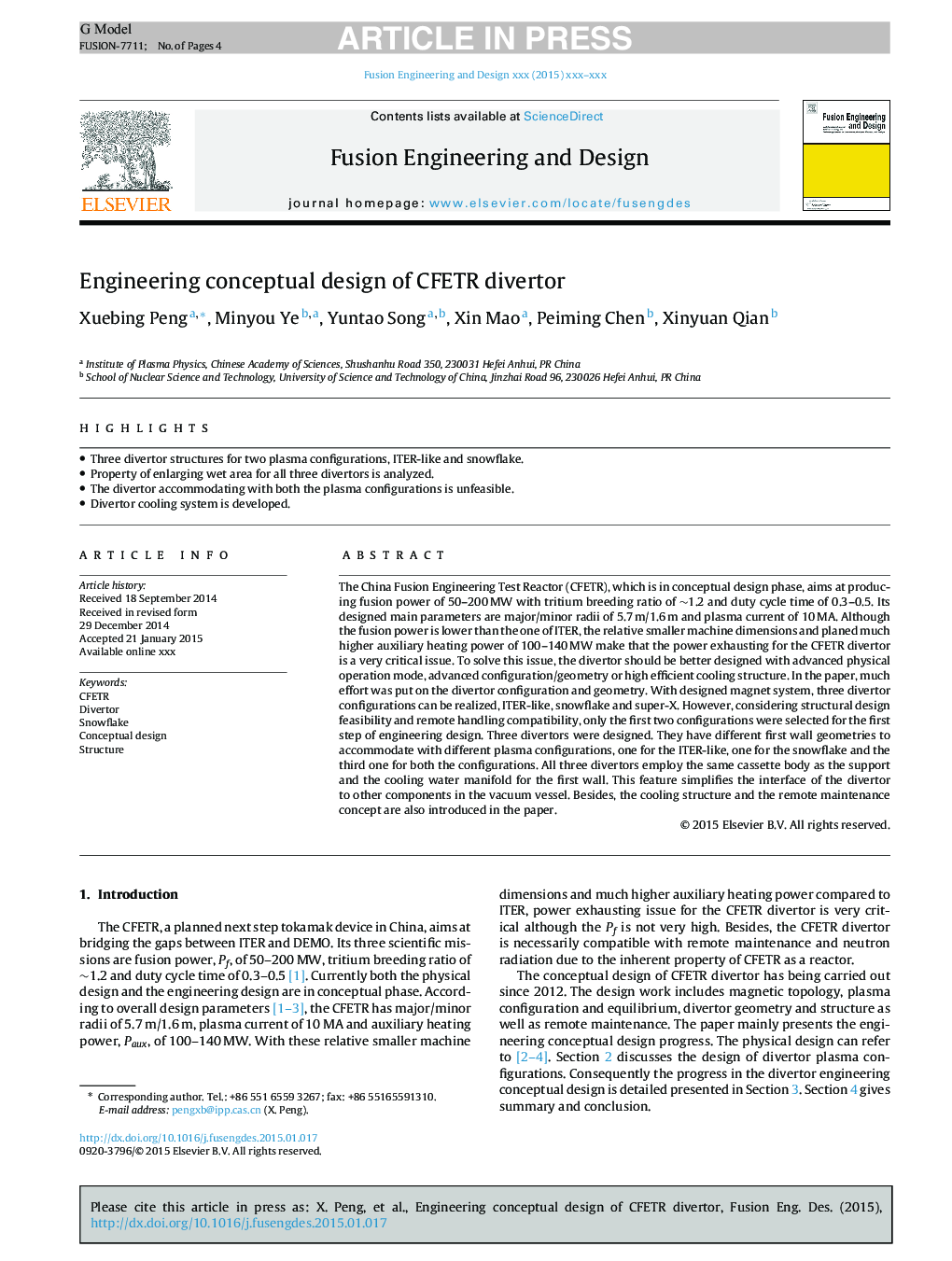| Article ID | Journal | Published Year | Pages | File Type |
|---|---|---|---|---|
| 6746100 | Fusion Engineering and Design | 2015 | 4 Pages |
Abstract
The China Fusion Engineering Test Reactor (CFETR), which is in conceptual design phase, aims at producing fusion power of 50-200Â MW with tritium breeding ratio of â¼1.2 and duty cycle time of 0.3-0.5. Its designed main parameters are major/minor radii of 5.7Â m/1.6Â m and plasma current of 10Â MA. Although the fusion power is lower than the one of ITER, the relative smaller machine dimensions and planed much higher auxiliary heating power of 100-140Â MW make that the power exhausting for the CFETR divertor is a very critical issue. To solve this issue, the divertor should be better designed with advanced physical operation mode, advanced configuration/geometry or high efficient cooling structure. In the paper, much effort was put on the divertor configuration and geometry. With designed magnet system, three divertor configurations can be realized, ITER-like, snowflake and super-X. However, considering structural design feasibility and remote handling compatibility, only the first two configurations were selected for the first step of engineering design. Three divertors were designed. They have different first wall geometries to accommodate with different plasma configurations, one for the ITER-like, one for the snowflake and the third one for both the configurations. All three divertors employ the same cassette body as the support and the cooling water manifold for the first wall. This feature simplifies the interface of the divertor to other components in the vacuum vessel. Besides, the cooling structure and the remote maintenance concept are also introduced in the paper.
Related Topics
Physical Sciences and Engineering
Energy
Energy Engineering and Power Technology
Authors
Xuebing Peng, Minyou Ye, Yuntao Song, Xin Mao, Peiming Chen, Xinyuan Qian,
